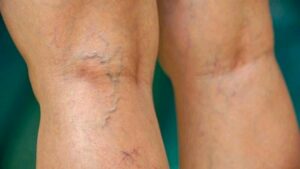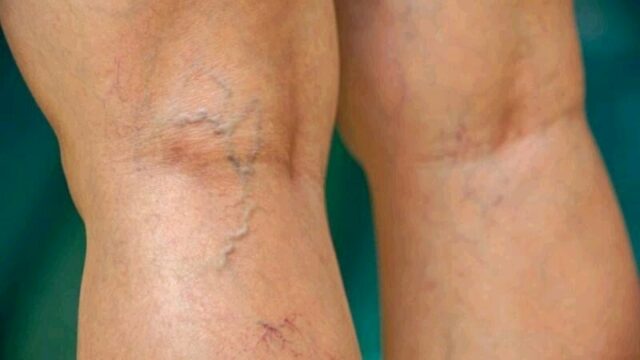Noticing bluish veins growing darker and more prominent in your legs is a cause of concern for many. But what do they mean, why is this happening now, and what can you do to treat or prevent them? Today, our podiatrists are sharing what you need to know about spider veins and varicose veins on your legs.

What are veins, and what do they do?
We have veins all around our body, most of which we can’t see through our skin. Veins play a very important role in helping return the blood from our body back to the heart. This includes working against gravity up our legs by using a series of one-way valves that prevent the blood from going backwards, combined with muscles surrounding the vessels which contract and help pump blood to the heart
Veins become dark and visible when there’s a problem with their function
If problems arise with the vein valves, the blood itself or the surrounding muscles, blood may pool inside the veins instead of being transported back to the heart. This causes pressure to build within the vein, which weakens the vessel wall and results in the vein bulging and twisting to produce a noticeable varicose vein or spider vein. The difference between the two are: Varicose vein: Varicose veins are bigger than spider veins and are the most common cause of prominent blue veins in the legs. They tend to bulge out from the skin, giving them a worm-like appearance. They can develop anywhere on the body but most often arise in the feet and ankles. Spider vein: Spider veins are very small, prominent vessels that often take the form of a spider web pattern – having a central point and then branching out. These veins may be red, purple, or blue. They’ll most often appear on the legs or the face.
Up to 60% of adults will experience changes in the appearance of their veins, which may occur along with:
Foot & leg aches and cramps
Throbbing, burning and tingling
Tired, heavy legs
Foot & leg swelling
Inflammation & itchiness
Are blue, prominent veins something to be concerned about?
The good news is that while dark veins may not look the best, they don’t pose an immediate hazard to your health. They can, however, indicate an increased risk of two important problems:
Blood clots: the blood that pools in large veins can, under certain circumstances, clot. If the clots travel to other areas of the body, they can result in an embolism (a blockage in an important vessel), which can be dangerous for your health and can even turn into a medical emergency.
Venous ulcers: blood building up and pooling is a cause of ulcers, which may bleed and even become infected








